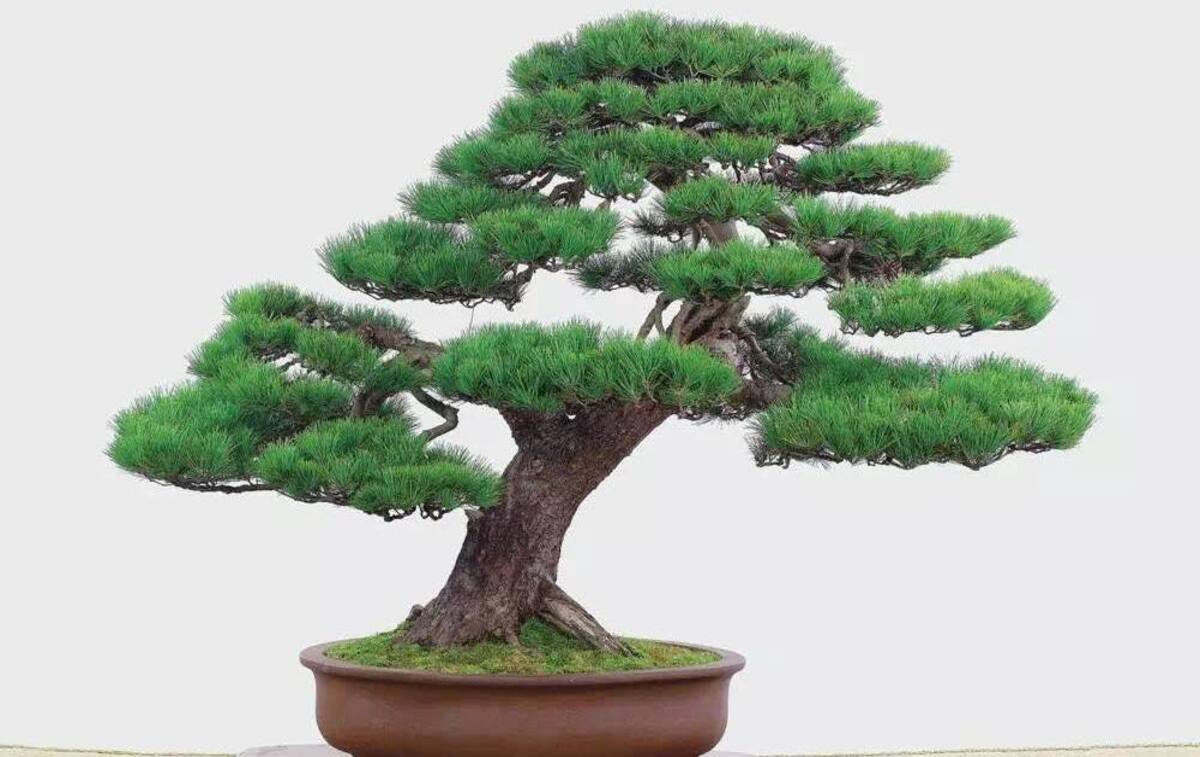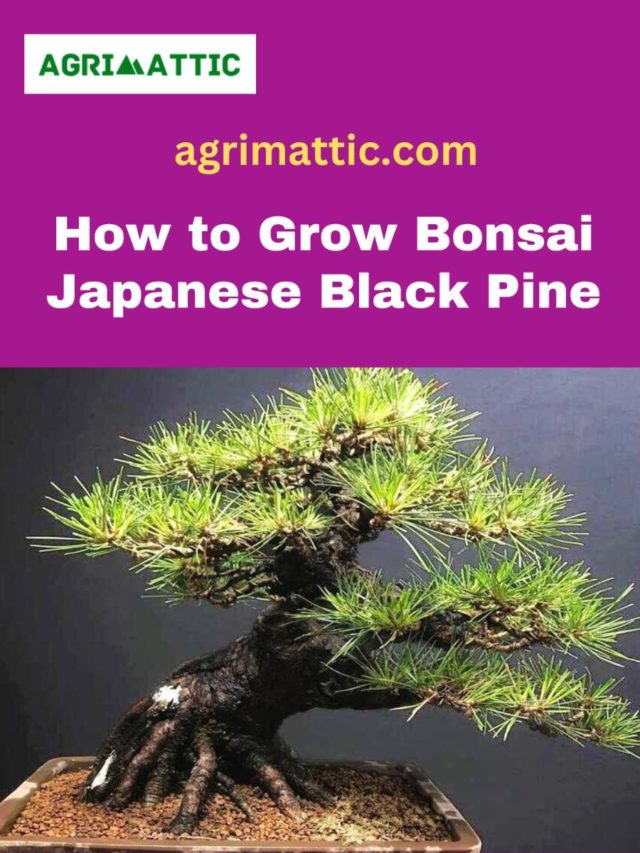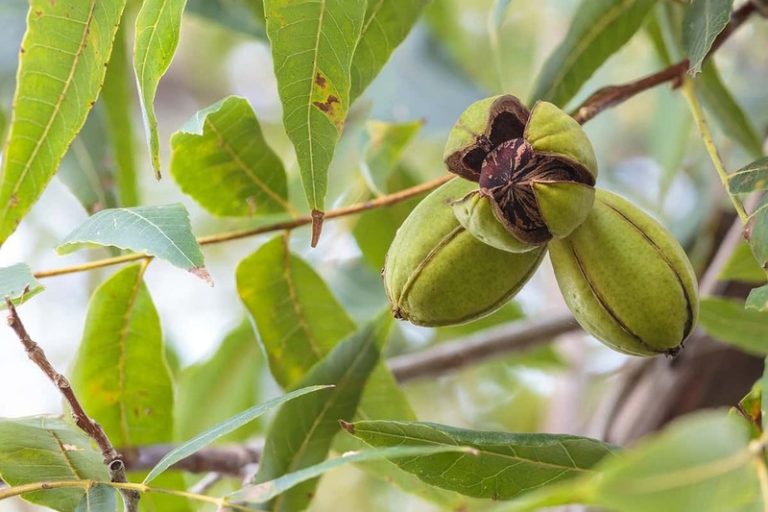Japanese Red Pine Bonsai : A Fascinating Art Form of Miniature Trees
Bonsai is a traditional Japanese art form that involves growing and shaping miniature trees in pots. One popular species used for bonsai is the Japanese Red Pine. In this article, we will explore the basics of cultivating and caring for a Japanese Red Pine Bonsai, ensuring it thrives and stays healthy.
What is a Japanese Red Pine Bonsai?
A Japanese Red Pine Bonsai is a miniature version of the Pinus densiflora tree, native to Japan, created through the art of bonsai. It is carefully pruned and shaped to replicate the appearance of a mature red pine tree. The tree has slender needles, reddish-brown bark, and attractive cones. Caring for a Japanese Red Pine Bonsai involves providing sufficient sunlight, proper watering, and regular pruning. It can live for many years with proper care and add beauty to bonsai collections or gardens.
History and Origins of the Japanese Red Pine Bonsai
Japanese Red Pine Bonsai has been around since ancient Japan. Bonsai is a form of art that has deep roots in Japanese society and has been practiced for hundreds of years.
In Japan, it has been a practice since the Heian time (794–1185) to grow small trees. But the art of bonsai really started to take shape during the Kamakura period (1185–1333). Zen Buddhism had a big impact on the growth of bonsai because it stressed the value of being quiet and in tune with nature. Bonsai became a way for monks and nobles to connect with nature and show their artistic skills.
In the history of bonsai, the Japanese Red Pine is a very important tree. People think that the art of growing Red Pine Bonsai goes back to the Edo time (1603–1868). During this time, a lot of bonsai experts and fans worked hard to find the best ways to grow and shape the Japanese Red Pine. The tree was perfect for bonsai because of its unique features, such as its pretty bark, graceful branches, and small leaves.
The Japanese Red Pine Bonsai gained further prominence during the Meiji era (1868–1922), when Japan opened up to the Western world. Bonsai, including the Red Pine variety, captured the interest and admiration of foreign visitors, leading to its spread beyond Japan’s borders.
Today, the Japanese Red Pine Bonsai is still a species that bonsai fans all over the world love and want. It is a beloved symbol of Japanese art and nature because it has a long past and is important to Japanese culture.
Japanese Red Pine Bonsai and Their Symbolism
Japanese Red Pine Bonsai carries significant symbolism in Japanese culture and the art of bonsai. Here are some aspects of its symbolism:
- Longevity: The Japanese Red Pine is known for its longevity in nature, and this characteristic is reflected in its bonsai form. The tree symbolizes endurance, resilience, and the ability to overcome challenges. It serves as a reminder to appreciate the beauty and strength that come with age.
- Harmony: Bonsai, like the Japanese Red Pine, shows how people and nature can live together in peace. The art of shaping and caring for a bonsai tree shows the careful balance between how people change the world and how beautiful it is on its own. The Red Pine Bonsai shows this peaceful interaction and helps people feel more connected to nature.
- Tranquility: The Japanese Red Pine is a good example of how calm and thoughtful bonsai can be. Its elegant branches and thin leaves make you feel calm and peaceful. A Red Pine Bonsai can make a room feel calm and peaceful, which can help people relax and feel good about themselves.
- Resilience and Perseverance: The Japanese Red Pine is native to the coasts of Japan, where it can handle strong winds and hard circumstances. As a bonsai, it stands for strength and the ability to deal with problems. It’s a lesson to keep going through hard times and stay strong and beautiful even when things are hard.
- Aesthetic Beauty: The Japanese Red Pine Bonsai looks nice because of its beautiful shape, rough bark, and delicate leaves. Its beauty is a sign of how much people appreciate nature’s art and strive for artistic perfection. It makes people more aware of how complicated and full of details the natural world is.
The Japanese Red Pine Bonsai is very important in Japanese society, and it has meanings that go beyond how it looks. It shows how people are connected to nature, how important patience and persistence are, and how important it is to look for beauty and balance in everyday life.
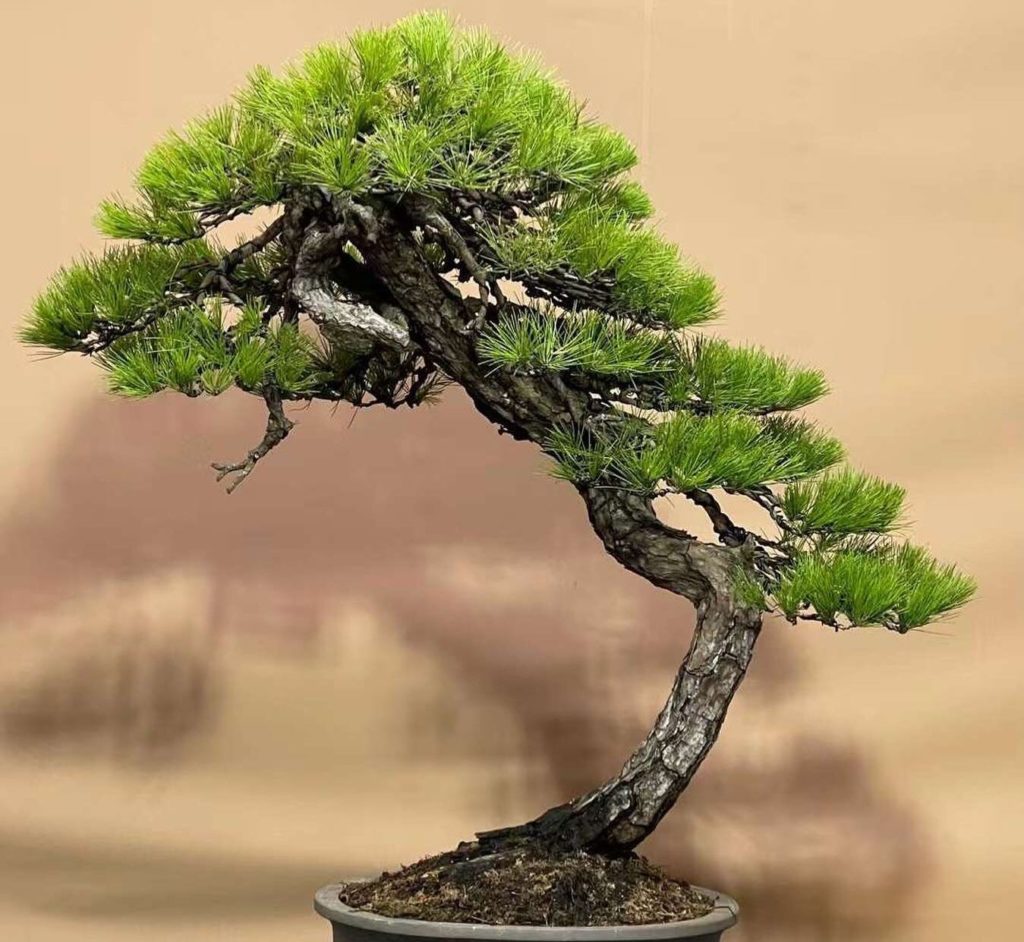
Characteristics of the Japanese Red Pine Bonsai
The Japanese Red Pine Bonsai (Pinus densiflora) possesses several distinct characteristics that make it a favored choice among bonsai enthusiasts. Here are some notable characteristics of the Japanese Red Pine Bonsai:
Needle Structure: The tips on the Japanese Red Pine Bonsai are long and thin, and they grow in pairs. The bonsai looks delicate and polished because of these tips. During the growing season, they are usually a bright green color, which adds to the beauty of the tree.
Bark: As a Japanese Red Pine Bonsai gets older, its wood gets a nice reddish-brown color that gets stronger as the tree gets older. The rough wood adds to the tree’s visual charm and makes it look more real.
Graceful Branches: The Japanese Red Pine Bonsai has branches that are lovely and beautiful. They grow in a spreading, upward design that gives the tree a sense of movement and life. The stems can be trained and formed carefully to get the look and balance that you want.
Cones: The Japanese Red Pine Bonsai makes small, thick cones like its full-sized cousin. Most of the time, these cones are brown and add to the natural look of the tree as a whole. Even though the cones aren’t always there, they make the bonsai look more real and charming when they are.
Size and Proportions: The Japanese Red Pine Bonsai, like other bonsai types, is a small version of its full-sized cousin. It is carefully cared for so that the base, branches, and leaves all stay the right size and shape. The size of the bonsai makes it easy to move and show in different places.
Hardy Nature: The Japanese Red Pine Bonsai is known for how hardy and flexible it is. The tree is strong by nature and can grow in many different circumstances. Because it is hardy, it can be grown as a bonsai because it can handle the pruning, wiring, and shape needed to make a bonsai beauty.
Overall, the Japanese Red Pine Bonsai has both delicate and hardy qualities that help it do well in the bonsai environment. It has thin needles and beautiful branches, for example, but it is also strong enough to survive in the bonsai environment. It looks nice and can survive and change, which makes it a popular choice for bonsai fans who want both beauty and toughness in their bonsai collections.
How to Grow a Japanese Red Pine Bonsai
Growing a Japanese Red Pine Bonsai requires careful attention to its specific needs. Here is a step-by-step guide to help you grow a healthy and thriving Japanese Red Pine Bonsai:
1. Acquire a Healthy Tree: Find a good farm or bonsai provider and ask for a young Japanese Red Pine tree. Look for a tree with a strong base, branches that aren’t too close together, and green, healthy leaves.
2. Select the Right Container: Choose a shallow bonsai pot with good drainage holes. The pot should be proportionate to the size of the tree and provide ample room for the roots to grow.
3. Prepare the Potting Medium: Use well-draining soil specifically designed for bonsai or create a mixture of Akadama, pumice, and volcanic rock. This blend promotes healthy root growth and prevents waterlogging.
4. Repotting: Repot the Japanese Red Pine Bonsai every 2-3 years during the spring. Prune about one-third of the root mass to encourage new growth. Position the tree slightly off-center in the pot to create visual interest.
5. Placement and Lighting: Position the bonsai in a location that receives full sun to partial shade. The Japanese Red Pine Bonsai thrives in bright, indirect sunlight. Rotate the tree occasionally to ensure even growth.
6. Watering: Water the bonsai thoroughly whenever the top inch of the soil feels slightly dry. Ensure that water reaches the entire root system. Avoid overwatering or allowing the soil to dry out completely.
7. Fertilization: Apply a balanced bonsai fertilizer during the growing season, usually from spring to early autumn. Follow the instructions on the fertilizer package to avoid overfertilization, as this can harm the tree.
8. Pruning and Wiring: The Japanese Red Pine Bonsai needs to be pruned often to keep its shape and encourage spreading. Pinch or cut back new growth to get the leaves to grow closer together. You can use wire to move the twigs where you want them, but be careful not to hurt the wood.
9. Winter Care: The Japanese Red Pine Bonsai needs to go to sleep for a while in the winter. Put the bonsai in a cool, protected place, like a garage or garden that isn’t warm. Protect the roots from freezing weather by putting the pot in a lower container or adding mulch to it.
10. Pest and Disease Control: Keep an eye out for common pests like aphids and spider mites on the bonsai. Use organic poisons or garden oils to get rid of any pests right away. Make sure there is good air flow around the tree to stop diseases caused by fungi.
11. Patience and Care: To grow a Japanese Red Pine Bonsai, you have to be patient and give it care every day. Keep an eye on the tree, change how you water and care for it based on what you see, and enjoy the process of taking care of a beautiful live work of art.
Remember that each bonsai is different, and it may take several years of care and training to make it look the way you want it to. With the right care and patience, your Japanese Red Pine Bonsai will grow and become a source of joy and respect.
Benefits of the Japanese Red Pine Bonsai
The Japanese Red Pine Bonsai (Pinus densiflora) offers numerous benefits beyond its aesthetic appeal. Here are some of the benefits of having a Japanese Red Pine Bonsai:
- Therapeutic and Relaxing: Caring for a Japanese Red Pine Bonsai can be a calming and meditative experience. The process of tending to the tree, such as pruning and watering, can help reduce stress and promote a sense of tranquility.
- Connection with Nature: You can bring a piece of nature into your home with bonsai, like the Japanese Red Pine Bonsai. It gives you a real link to the natural world and can help you create a calm and relaxing space.
- Indoor Landscaping: The Japanese Red Pine Bonsai is a beautiful indoor piece of landscaping. Its small size and artistic shape make it a great addition to your home or office, giving any area a touch of elegance and natural beauty.
- Education and Learning: Growing a Japanese Red Pine Bonsai is a good way to learn more about bonsai and gardening. It lets you learn about the tree’s specific needs, get better at cutting and shape, and learn more about how to care for plants.
- Aesthetically Pleasing: The Japanese Red Pine Bonsai is visually striking with its delicate foliage, graceful branches, and textured bark. Its presence can enhance the aesthetics of any room or outdoor setting, becoming a focal point or conversation piece.
- Symbolic Significance: Bonsai, including the Japanese Red Pine Bonsai, carries symbolic meaning in Japanese culture. It represents harmony, resilience, and the appreciation of nature’s beauty. Owning a Japanese Red Pine Bonsai can serve as a reminder of these values and enrich your connection with Japanese traditions.
- Conversational and Decorative Element: The uniqueness and beauty of a Japanese Red Pine Bonsai often spark conversations and admiration. It can become a captivating decorative element, attracting the attention and curiosity of visitors, friends, and family.
- Sense of Accomplishment: Growing and caring for a Japanese Red Pine Bonsai is a rewarding and fulfilling endeavor. As you witness the tree’s growth, development, and overall health, it instills a sense of accomplishment and pride in your gardening skills and dedication.
- Longevity and Legacy: A Japanese Red Pine Bonsai can live for a long time, sometimes even for generations. Giving a well-cared-for bonsai to the next generation can be a way to leave a long memory and keep your family’s history alive.
Owning a Japanese Red Pine Bonsai provides a variety of benefits, from offering a quiet and soothing experience to connecting with nature and improving your living area. It is a unique and gratifying activity that brings beauty, joy, and a better awareness for the natural world into your life.
Displaying and Showcasing the Japanese Red Pine Bonsai
Displaying and showcasing a Japanese Red Pine Bonsai (Pinus densiflora) requires careful consideration to highlight its beauty and create an aesthetically pleasing presentation. Here are some tips to help you display and showcase your Japanese Red Pine Bonsai effectively:
Choose an Appropriate Stand or Table: Choose a table or support that complements the design and scale of your bonsai. The pedestal must be robust, proportionate, and composed of materials that complement the overall aesthetic of the bonsai, such as wood or stone.
Consider the Viewing Angle: Determine the best viewing angle for your Japanese Red Pine Bonsai. Ideally, the tree should be displayed at eye level or slightly below to allow viewers to appreciate its intricate details and form without straining their necks.
Lighting: Adequate lighting is crucial to showcasing the beauty of your bonsai. Place the bonsai in a well-lit area where natural light can illuminate its foliage and create depth. Alternatively, use carefully positioned accent lighting to highlight specific features and create a visually captivating display.
Background and Surroundings: Create a visually pleasing backdrop that enhances the bonsai’s appearance. Avoid clutter or distracting elements that may take away from the focus on the tree. A solid-colored wall or a neutral background can help the bonsai stand out and draw attention to its unique characteristics.
Balance and Composition: Achieve a sense of balance and harmony in your display’s overall composition. Consider the visual weight and spacing of elements such as accent plants, stones, and figurines. These should compliment and accentuate the Japanese Red Pine Bonsai’s attractiveness without overpowering it.
Rotation: Regularly rotating the bonsai will guarantee even development and prevent one-sided growth. This enables viewers to appreciate the tree from a variety of perspectives and prevents one aspect from becoming overly dominant.
Group Displays: Bonsai of Japanese Red Pine can be displayed singly or as part of a group. Grouping bonsai of contrasting species, sizes, or designs can produce a visually arresting and dynamic composition. Ensure that each tree in the group has sufficient space for individual appreciation.
Showcasing Techniques: Participating in bonsai exhibitions and shows provides opportunities to display your Japanese Red Pine Bonsai to a wider audience. Follow guidelines and standards set by the event organizers to present your bonsai in the best possible way, considering factors such as placement, accent plants, and appropriate accessories.
Remember, displaying a Japanese Red Pine Bonsai is an art form in itself. Experiment with different display options, seek inspiration from bonsai exhibitions, and trust your artistic intuition to create a captivating showcase that highlights the unique beauty and elegance of your Japanese Red Pine Bonsai.
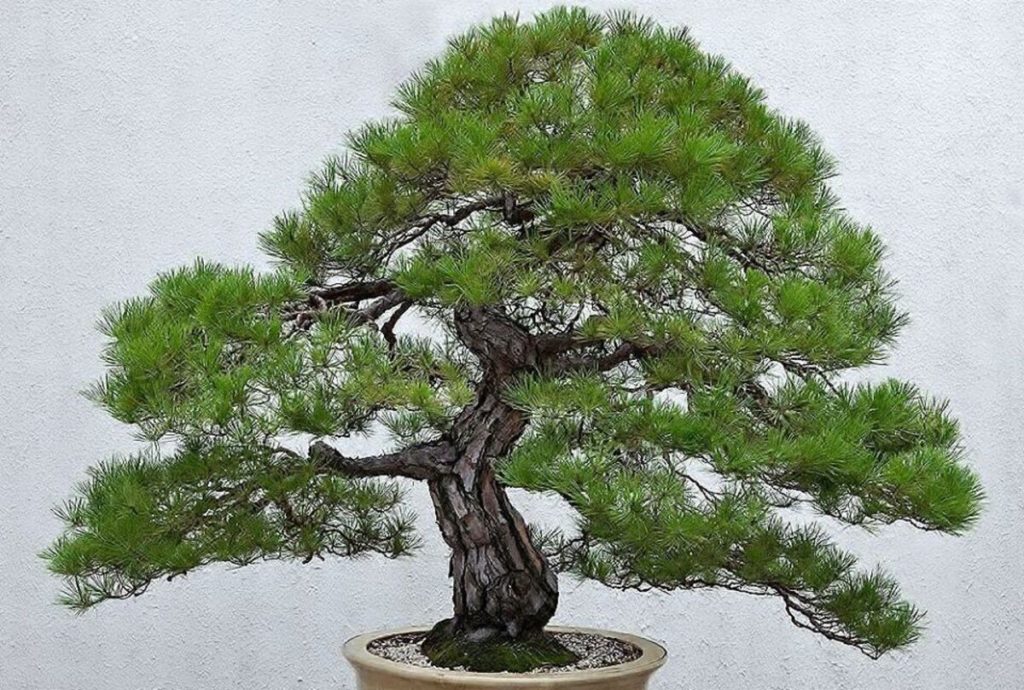
Styling and Design of a Japanese Red Pine Bonsai
The styling and design of a Japanese Red Pine Bonsai (Pinus densiflora) involve careful shaping and training to create a visually appealing and harmonious composition. Here are some key considerations and techniques for styling and designing your Japanese Red Pine Bonsai:
1. Research and Study: Familiarize yourself with the natural growth habits and characteristics of the Japanese Red Pine tree. Study images and references of mature Red Pines in their natural environment to gain inspiration and an understanding of their typical form.
2. Trunk Selection: Select a primary trunk that has desirable taper, movement, and character. Consider the natural curves and bends found in mature Red Pines and incorporate them into the design. The trunk should have a sense of harmony and flow, evoking a sense of age and vitality.
3. Branch Development: Japanese Red Pine Bonsai typically exhibit elegant, upward-sweeping branches. Encourage the growth of lateral branches by removing excessive vertical shoots and pruning back new growth. Aim for well-spaced branches that follow the natural pattern of the tree while maintaining overall balance and visual harmony.
4. Wiring and Shaping: Wiring is often used to guide the branches into the desired position. Use aluminum or copper wire of an appropriate thickness to avoid damaging the branches. Wrap the wire gently around the branch, making sure it is snug but not too tight. Shape the branches gradually and delicately, taking care to create a sense of movement and realism.
5. Branch Density: Pinching or cutting back new growth will make the tips of leaves thicker. This method helps the secondary and tertiary branches grow, making the tree look bigger and more compact. Keep a mix between areas with lots of plants and areas with few plants to make a design that looks good.
6. Consider Negative Space: The empty areas in a pattern are just as important as the stems and leaves. Leave enough space between the branches and layers to give the bonsai a sense of depth and let light get inside. This gives the design more visual interest and a more natural look.
7. Jins and Shari: Jins are deadwood branches, and Shari refers to the exposed, weathered wood on the trunk. Incorporate jins and shari to mimic the effects of aging and natural weathering. These features add character and a sense of authenticity to the bonsai. Use carving tools and lime sulfur to create and treat these elements.
8. Continual Care and Refinement: Bonsai styling is an ongoing process that requires regular maintenance and refinement. Prune back new growth, wire and shape branches as needed, and make adjustments to maintain the desired design. As the bonsai matures, revisit and refine the styling to reflect its evolving character.
Remember, styling and designing a Japanese Red Pine Bonsai is an art form that requires patience, observation, and an understanding of the tree’s natural characteristics. With practice and careful attention to detail, you can create a beautifully styled bonsai that captures the essence and grace of the Japanese Red Pine.
How to Care for and Maintain a Japanese Red Pine Bonsai
Caring for and maintaining a Japanese Red Pine Bonsai (Pinus densiflora) involves providing the proper conditions and attention to ensure its health and vitality. Here are some essential care guidelines for your Japanese Red Pine Bonsai:
- Sunlight: Japanese Red Pine Bonsai thrives in full sun to partial shade. Place your bonsai in a location that receives at least 6 hours of direct sunlight each day. If you keep it indoors, ensure it is near a south-facing window or use artificial grow lights to provide adequate light.
- Watering: Water your Japanese Red Pine Bonsai thoroughly whenever the top inch of the soil feels slightly dry. Watering requirements may vary depending on the climate and season. During the growing season (spring to autumn), you may need to water more frequently, but be cautious not to overwater. Allow the soil to partially dry between waterings to avoid waterlogged roots.
- Soil: Use a well-draining soil mix specifically designed for bonsai or create a blend of Akadama, pumice, and volcanic rock. This mixture allows for proper water drainage while retaining enough moisture for the tree’s roots. Repotting the bonsai every 2–3 years helps refresh the soil and promote healthy root growth.
- Fertilization: Feed your Japanese Red Pine Bonsai with a balanced, slow-release bonsai fertilizer during the growing season. Follow the instructions on the fertilizer package for proper application and dosage. Avoid fertilizing during the winter when the tree is in dormancy.
- Pruning and Wiring: Regular pruning is necessary to maintain the shape and health of your bonsai. Remove any dead, damaged, or diseased branches. Pinch or prune back new growth to maintain the desired form and encourage denser foliage. Wiring can be used to guide branches into the desired position, but be cautious not to leave wires on for too long to prevent wire bite.
- Pest and Disease Control: Check your tree for bugs like aphids, spider mites, and scale insects on a regular basis. Use organic poisons or garden oils right away to get rid of any pests. Make sure there is enough wind around the tree to stop plant diseases from growing. If you see any signs of sickness or damage from pests, you should move right away.
- Winter Care: Japanese Red Pine Bonsai needs to rest during the winter so that it can grow in a healthy way. Put your bonsai in a cool, protected place, like a closet or garden that isn’t heated. Protect the roots from freezing weather by putting the pot in a lower container or adding mulch to it. During this time, water minimally and let the soil dry out a little bit between watering.
- Regular Inspection: Regularly inspect your Japanese Red Pine Bonsai for any signs of stress, such as yellowing or wilting foliage, insect infestations, or root issues. Early detection allows for timely intervention and prevents further damage to the tree.
- Training and Styling: As your bonsai grows, continue training and shaping it to maintain its desired form. Wiring, pruning, and occasional repotting help refine the design and encourage healthy growth.
- Patience and Observation: Bonsai care requires patience and a keen eye for detail. Observe your Japanese Red Pine Bonsai regularly, adjusting watering and care routines based on its specific needs. Each bonsai is unique, and understanding its individual requirements will help you provide optimal care.
By following these care guidelines, you can ensure the health and longevity of your Japanese Red Pine Bonsai, allowing it to thrive and bring beauty to your living space for years to come.
Japanese Red Pine Bonsai Care Sheet
| Aspect | Care Tips |
| Watering | Water thoroughly when the top inch of soil is slightly dry. Avoid overwatering and ensure proper drainage. |
| Sunlight | Place in full sun to partial shade, receiving at least 6 hours of direct sunlight per day. |
| Temperature | Prefers cool to mild temperatures. Protect from extreme heat or cold. |
| Humidity | Moderate humidity levels are suitable. Mist the foliage occasionally or use a humidity tray. |
| Fertilization | Use a balanced, slow-release bonsai fertilizer during the growing season. Follow instructions for application. |
| Pruning and Trimming | Regularly prune dead, damaged, or diseased branches. Pinch or trim new growth to maintain shape and density. |
| Wiring and Styling | Use wiring to guide branches into desired positions. Be cautious not to leave wires on for too long to prevent wire bite. |
| Repotting | Repot every 2-3 years using a well-draining bonsai soil mix. Refresh the soil and trim the roots as needed. |
| Pest and Disease Control | Regularly inspect for pests and treat promptly using appropriate organic insecticides or horticultural oils. Maintain good airflow. |
| Winter Care | Provide a cool, sheltered location during winter dormancy. Protect roots from freezing temperatures and water sparingly. |
| Regular Maintenance | Observe the bonsai regularly for signs of stress, adjust care routines accordingly, and continue training and shaping as needed. |
Remember, the care needs of your Japanese Red Pine Bonsai may vary depending on your specific climate and environmental conditions. Regular observation and adjustments will ensure the best care for your bonsai.
Conclusion
Growing a Japanese Red Pine Bonsai is a rewarding journey. By following the care guidelines outlined in this guide, you can create a beautiful and healthy bonsai tree. Remember to enjoy the artistry and tranquility that bonsai brings, and don’t hesitate to seek advice from experienced bonsai enthusiasts. Happy bonsai gardening!
FAQ:
Q: What is Japanese Red Pine Bonsai?
A: Japanese Red Pine Bonsai, scientifically known as Pinus densiflora, is a small, cultivated tree that has been trained and pruned to mimic the appearance of a mature Red Pine tree in miniature form. It is a popular species of bonsai known for its graceful branches, vibrant green needles, and attractive reddish-brown bark.
Q: How tall does a Japanese Red Pine Bonsai grow?
A: The height of a Japanese Red Pine Bonsai depends on the variety and the size the bonsai artist wants. Most grown Japanese Red Pine Bonsai can grow to be between 30 cm (12 inches) and 60 cm (24 inches) tall, or even taller.
Q: What are the care requirements for a Japanese Red Pine Bonsai?
A: Japanese Red Pine Bonsai requires ample sunlight, regular watering to keep the soil slightly moist but not waterlogged, and a well-draining soil mix. It prefers cool to mild temperatures, moderate humidity, and regular fertilization during the growing season. Pruning, wiring, and occasional repotting are necessary to maintain its shape and health. Additionally, protecting the bonsai from extreme temperatures and providing winter dormancy care are crucial.
Q: How long does a Japanese Red Pine Bonsai live?
A: A Japanese Red Pine Bonsai can live for decades or even longer if it is taken care of well. Some bonsai that have been cared for well have lived for more than 100 years. How long a bonsai lasts relies on how well it is cared for, how the surroundings is, and what the tree’s genes are like.
Q: Can I grow a Japanese Red Pine Bonsai indoors?
A: While Japanese Red Pine Bonsai prefer outdoor conditions, it is possible to grow them indoors. However, indoor cultivation requires providing ample sunlight through a south-facing window or artificial grow lights. It is important to maintain suitable temperature and humidity levels and ensure proper ventilation to prevent the tree from suffering due to dry indoor air.
Q: Can I shape a Japanese Red Pine Bonsai to my liking?
A: Yes, Japanese Red Pine Bonsai can be shaped and styled according to your preferences. Through techniques such as pruning, wiring, and trimming, you can train the branches and shape the tree to achieve the desired aesthetic. It is essential to follow proper bonsai styling techniques and have a clear vision of the final design.
Q: Where can I buy a Japanese Red Pine Bonsai?
A: Japanese Red Pine Bonsai can be purchased from bonsai nurseries, specialized bonsai stores, or online bonsai retailers. It is recommended to buy from reputable sources that provide healthy and well-cared-for bonsai trees.
Q: How often should I water my Japanese Red Pine Bonsai?
A: Water thoroughly when the top inch of soil is slightly dry, avoiding overwatering.
Q: Do I need to fertilize my Japanese Red Pine Bonsai?
A: Yes, use a balanced, slow-release bonsai fertilizer during the growing season, following the instructions on the package.
Q: How often should I prune my Japanese Red Pine Bonsai?
A: Regularly prune to remove dead or damaged branches and pinch or trim new growth as needed.
Q: When should I wire and style my Japanese Red Pine Bonsai?
A: Wire and style during the active growth period in spring and early summer, ensuring the tree is healthy and vigorous.
Q: How often should I repot my Japanese Red Pine Bonsai?
A: Repot every 2-3 years in early spring, trimming the roots and refreshing the soil mix.
Also Read:

